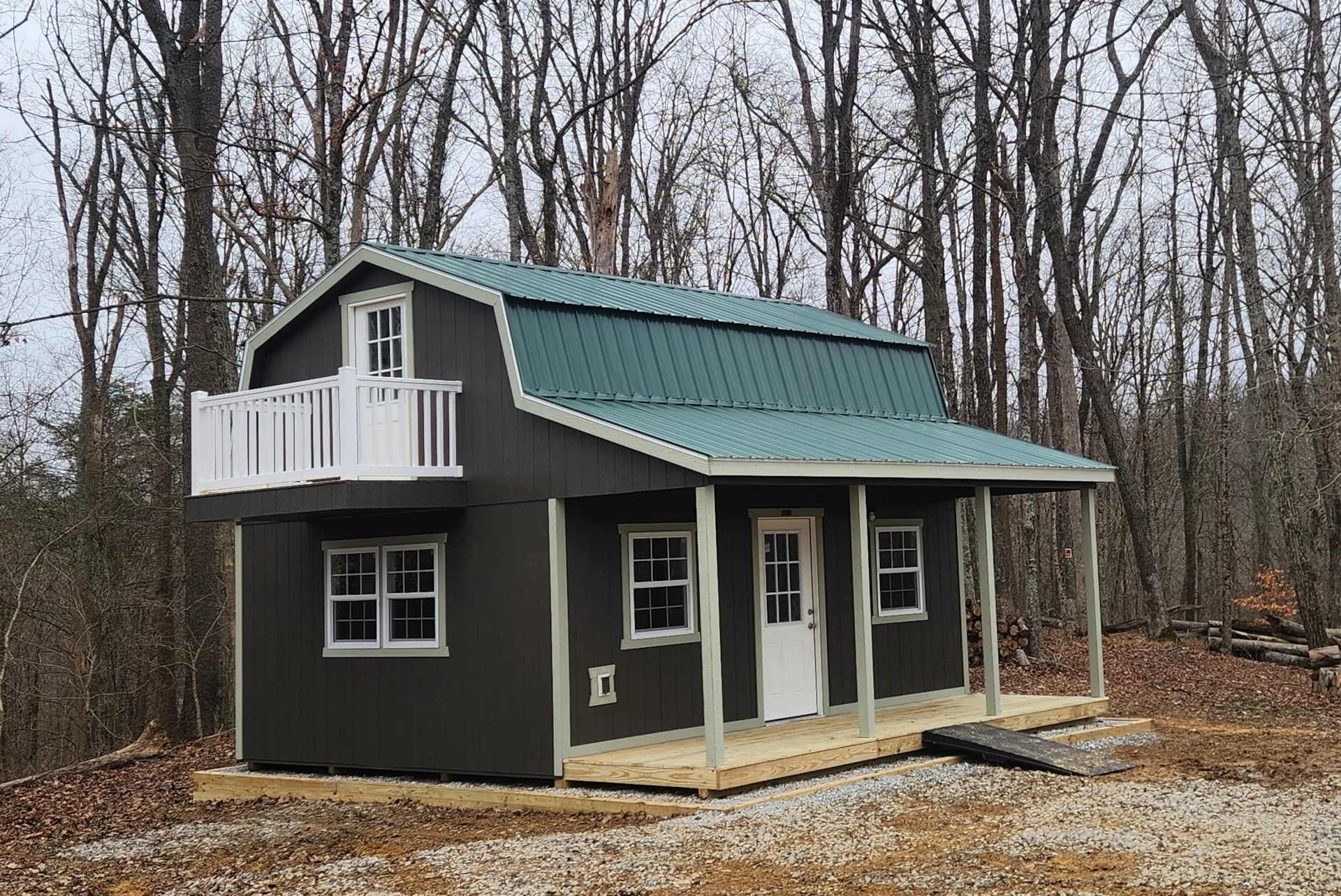
Shed Maintenance Checklist for Ohio Winters
November 17, 2025

November 17, 2025
When the temperatures drop and snow begins to fall, your shed becomes one of the most important structures on your property. It protects tools, outdoor gear, and seasonal equipment from the harshest conditions Ohio can deliver. But even the strongest shed needs a little care to make it through winter without damage.
This checklist will help you prepare your shed for the cold months ahead, so it stays dry, sturdy, and ready for spring.
Start at the top. Your shed roof takes the brunt of Ohio’s snow and ice, so it’s important to make sure it’s ready for the season.
What to look for:
If you notice any weak spots, make repairs before the first snowfall. Clearing leaves, twigs, and dirt helps prevent moisture buildup that can lead to leaks or rot. Visit our roofing options page for more info.
Cold air, snow, and moisture often find their way into sheds through gaps around doors and windows. Inspect each one for drafts or visible cracks.
Quick fixes:
If your shed door is difficult to open or close, lubricate the hinges now to prevent freezing later. Check out optional shed accessories that can help during the winter!
Walk around your shed and look for signs of wear on the siding and trim. The freeze-thaw cycle can worsen small cracks, so catching them early is key.
Check out our siding options if you think you need an upgrade.
Your shed’s floor is exposed to moisture and temperature swings, especially if it sits directly on the ground. Check for soft spots, cracks, or water stains.
Pro tips:
A solid, dry foundation prevents warping and mold during long Ohio winters.
Before the snow arrives, take some time to clean out your shed. Remove summer tools, sweep out dirt and leaves, and organize what’s left.
Smart storage ideas:
A well-organized interior makes winter work faster and safer, especially when temperatures are freezing.
Cold air and moisture can lead to rust on metal tools and machinery. To prevent corrosion:
By keeping tools dry and lubricated, you’ll save time and money on repairs come spring.
If your shed has lighting or electrical outlets, make sure everything is functioning properly before the dark winter months set in.
Good lighting makes it safer to grab tools or equipment during those early morning or evening snowstorms.
If you use your shed year-round, insulating the walls and roof can make a big difference. Even simple upgrades, like foam board insulation or draft stoppers, help regulate temperature and protect stored items.
Extra protection tips:
A well-insulated shed can even double as a workspace in the winter months.
Once your shed is winter-ready, plan for easy access when snow starts falling.
If your shed roof is pitched, occasionally clear off heavy snow buildup to prevent excess weight or leaks.
Walk through your entire shed one last time before the first frost. Make sure:
Once everything is sealed, organized, and secure, your shed will be ready to handle whatever Wooster, Ohio winter brings.
If your current shed isn’t holding up to Ohio’s winters, it may be time for an upgrade. At NuHaus, we design and build storage sheds made to handle the cold. With durable shed roofs, tight seals, and custom features like ramps, lofts, and shelving, our sheds combine Amish craftsmanship with all-season function.
Whether you need a new outdoor storage shed or just want expert advice on maintaining your current one, our team is here to help.
Ready to prepare for winter?
Visit a NuHaus lot or contact us today to explore sheds built to last through every Ohio season.